

We may earn revenue from the products available on this page and participate in affiliate programs. Learn More ›
Watering gardens can be time-consuming—particularly for those who live in an area with minimal rainfall. But water is a limited resource everywhere and water-wise gardeners are always looking for creative ways to reduce plant watering needs and keep their gardens looking trim and tidy without much help from their garden hoses.
From growing low-water, alternative lawns to installing drip irrigation systems, there are lots of ways to conserve water outdoors; however, one of the easiest and most eco-friendly solutions is choosing xeriscape landscaping, which includes use of drought-tolerant plants.
As Nell Foster, an Arizona-based gardener and the owner of Joy Us Garden, explains, “Xeriscaping conserves water, saves money, reduces maintenance, [and] protects our natural resources.” Many drought-tolerant plants can be used for xeriscape gardening, but she says that “native, drought, and desert-adapted plants” are especially good choices because they tolerate dry soils and tough growing conditions. “Plus, they attract pollinators,” says Foster.
In many areas of the country, precipitation patterns are changing, but no matter where you live or the specific growing conditions in your garden, there are many native xeriscape plants to try. Discover some of our native plant choices, helpfully divided by growing region, in the guide below.
Northeast
Extreme heat and dry weather are less problematic in the chilly Northeast, but garden soil can still run dry in this region, especially in gardens with sandy soils. If you want to cut down on watering and reduce landscaping costs, try these low-water native plants in your xeriscape garden. But remember, flowers that are native to cold, northern areas may require cold stratification if you grow them from seed.
Butterfly Weed (Asclepias tuberosa)
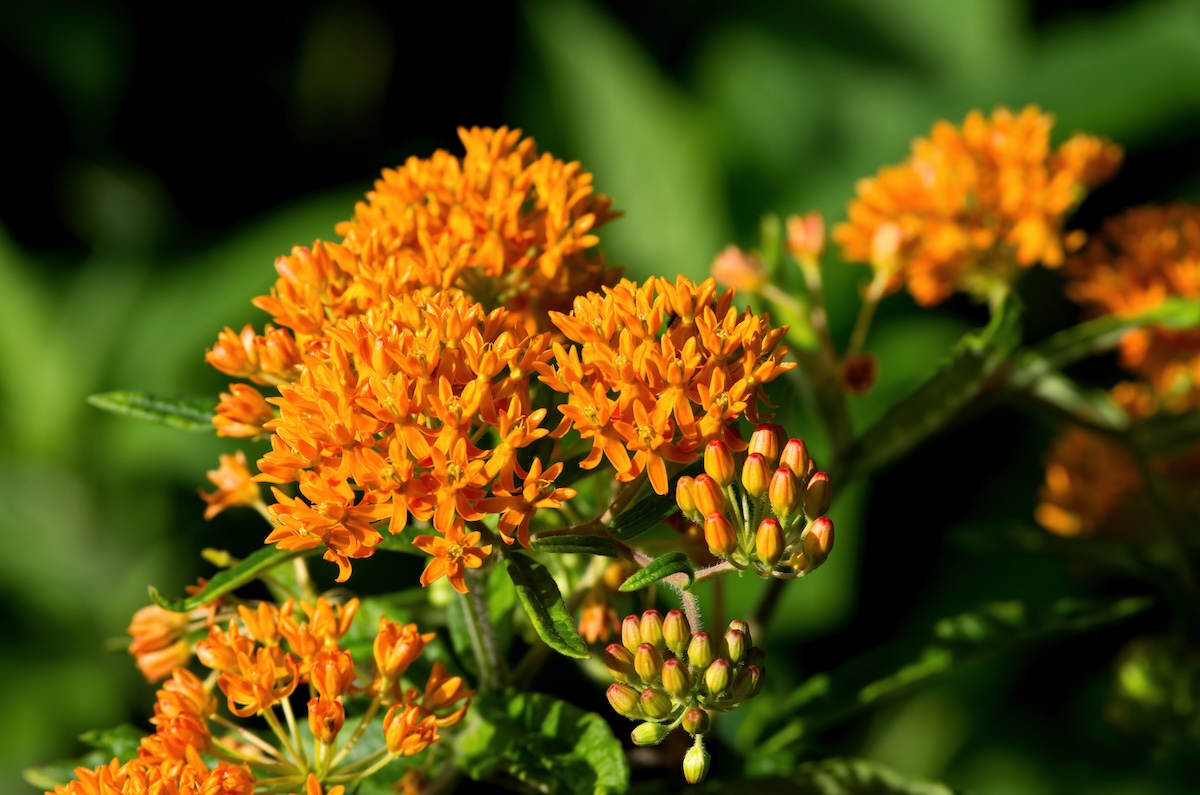
Known for its bright, orange flowers and tropical look, butterfly weed is one of the showiest milkweeds you can find and it’s a popular stopping spot for butterflies and bees. Queen butterflies and monarchs use this plant as a host for their caterpillars, plus growers will appreciate butterfly weed’s sweet, vanilla-like fragrance. Once established, butterfly weed develops a long tap root, which the plant uses to access water deep in the soil during drought.
Eastern Red Columbine (Aquilegia canadensis)

With their delicate stems and airy leaves, columbines may look too dainty to thrive in a xeriscape landscape; however, these spring-blooming plants are hardier than they seem. Columbines love well-draining soils and they naturally grow along semi-shaded forest margins. To keep water needs low, grow columbines in dappled light and watch for hummingbirds, which love visiting their bright red flowers.
Mountain Mint (Pycnanthemum muticum)
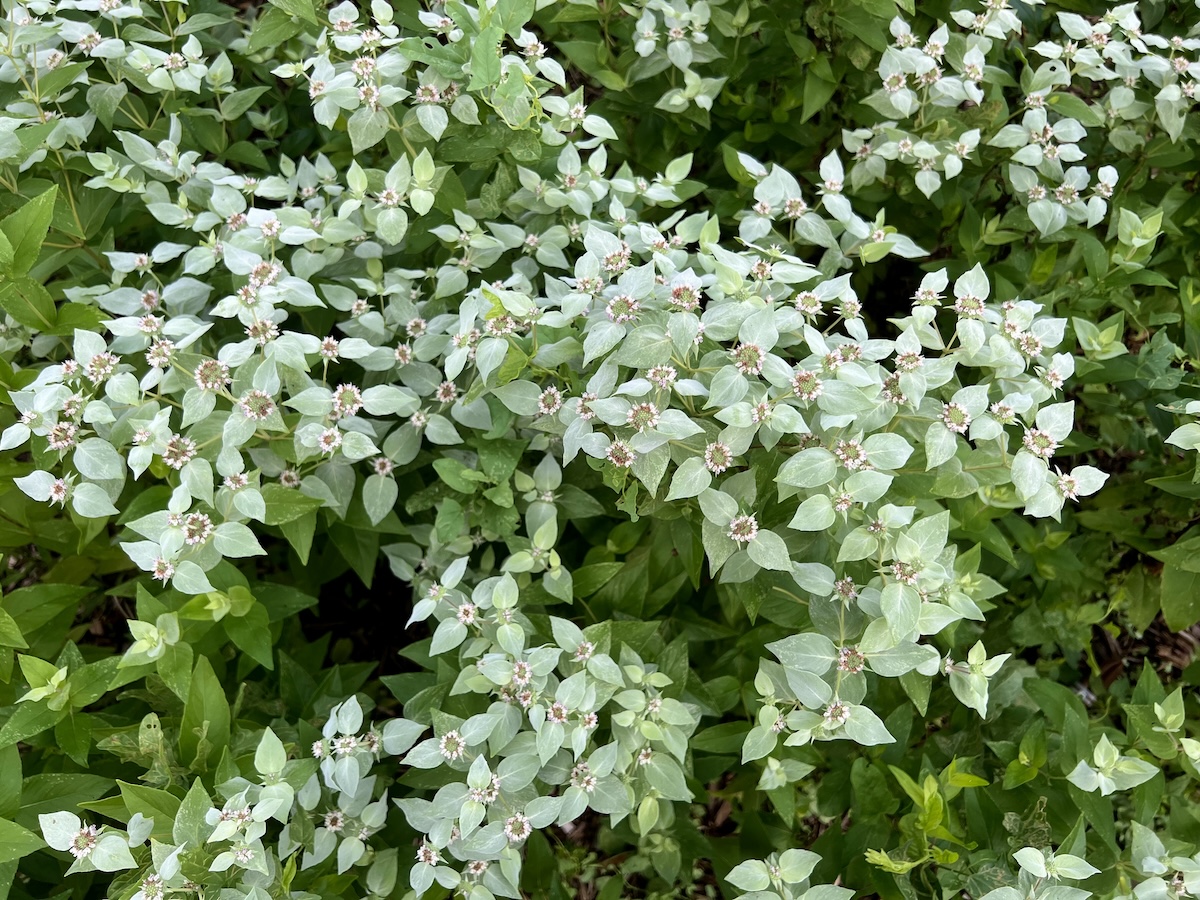
Many mint varieties grow aggressively, but mountain mint is a drought-tolerant native that is much easier to contain than its invasive cousins. If you keep a pollinator garden, mountain mint is a must. When this plant blooms in late summer to early fall, its flowers are highly attractive to bees and other pollinators and its silver-toned, aromatic leaves have tons of ornamental appeal.
Southeast
Even though the Southeast is associated with high humidity, hot southern summers can still cause plant stress and leave ornamentals with wilting leaves and drooping stems. Adding low-water, native plants to flower beds can cut watering needs significantly. But water-savvy gardeners may also want to install a xeriscape lawn with rocks, hardy ground covers, and additional native plants for further water savings.
Lanceleaf Coreopsis (Coreopsis lanceolata)
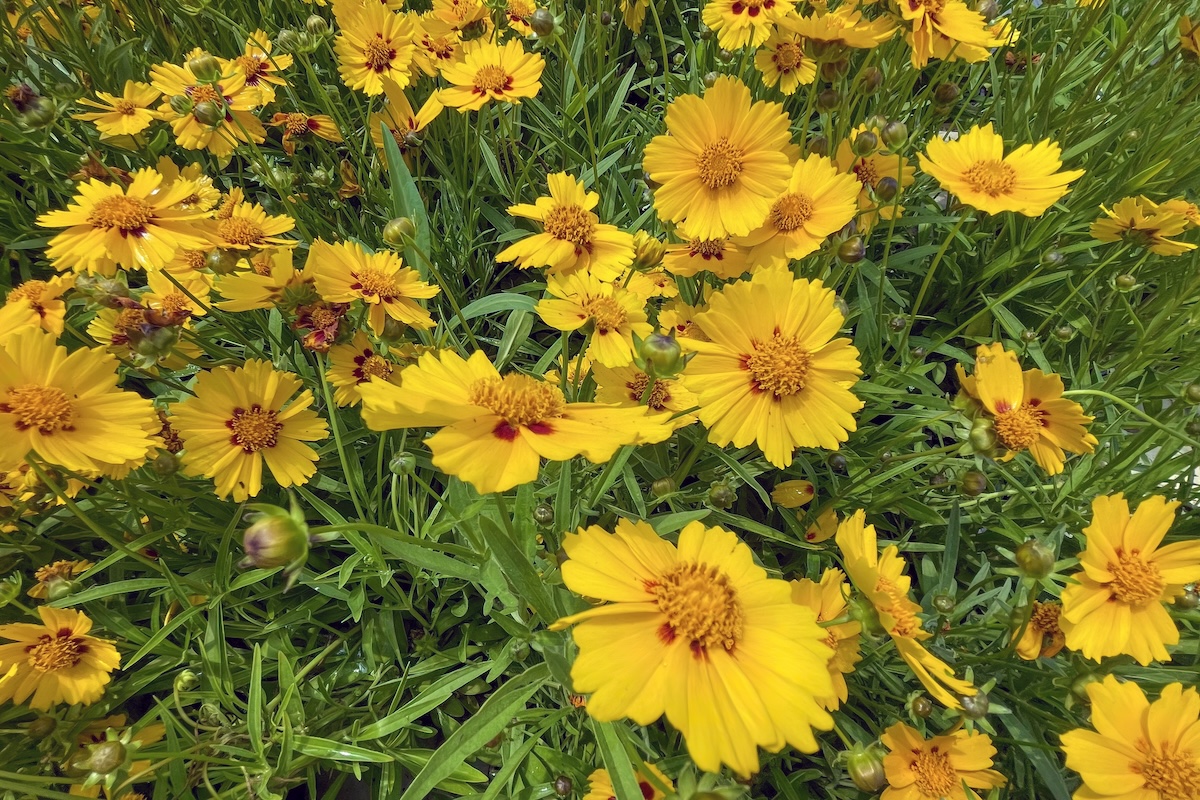
With their buttery-yellow petals and wide open flower faces, lanceleaf coreopsis are happy-looking plants that are sure to delight in flower beds and bouquets. Fast-growing and resilient, coreopsis plants sprout readily from seed, but they can also be grown from nursery starts if you want to enjoy earlier flowers. The native of the aster family is drought-tolerant, deer-resistant, and serves as a host for several types of moths.
New Jersey Tea (Ceanothus americanus)
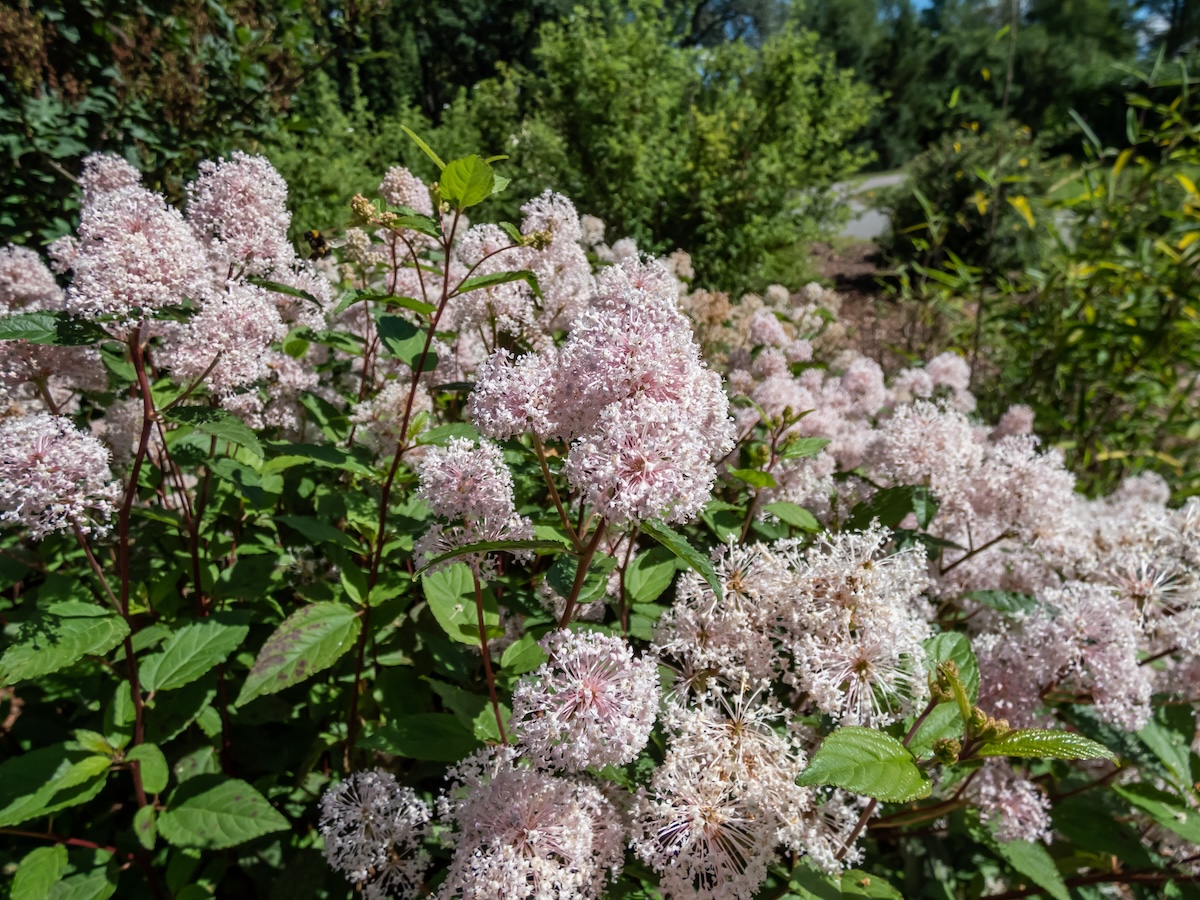
During the Revolutionary War, American settlers had a hard time getting their hands on British tea supplies, so they drank tea brewed from New Jersey tea plant leaves. Today, New Jersey tea plants are grown mostly as ornamentals and they can be cultivated as standalone shrubs or grown together as a low privacy hedge. Thanks to their deep tap roots, New Jersey tea plants have ultra-low watering needs and their summer-blooming flowers are irresistible to hummingbirds and butterflies.
Purple Coneflower (Echinacea purpurea)
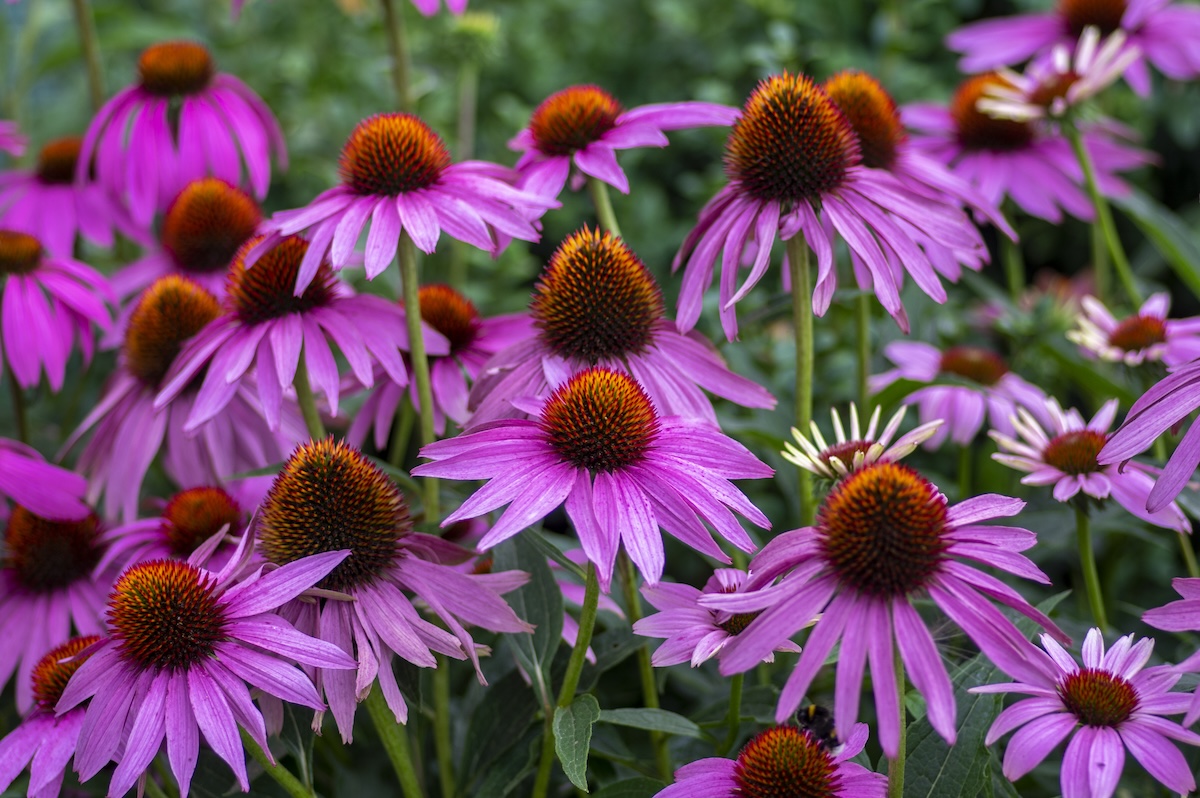
Also known as echinacea, purple coneflowers are another popular choice for pollinator gardens; their large blooms attract a wide range of beneficial insects. Finches and other seed-eating birds can’t get enough of the many tiny, dark seeds that appear after the flowers fade. While purple coneflowers aren’t quite as drought tolerant as some natives, they typically don’t need supplemental water if they’re grown in dappled light.
Midwest
Many plants that are native to the Midwest are also grown as ornamentals in other parts of the country. But the native plants below are perfectly suited to the specific climate and weather patterns of Midwestern gardens—even when those gardens don’t receive much water. After planting these hardy natives in your xeriscape landscape design, add a thick layer of mulch around plant roots to reduce soil evaporation rates and shelter the soil from harsh weather.
Leadplant (Amorpha canescens)
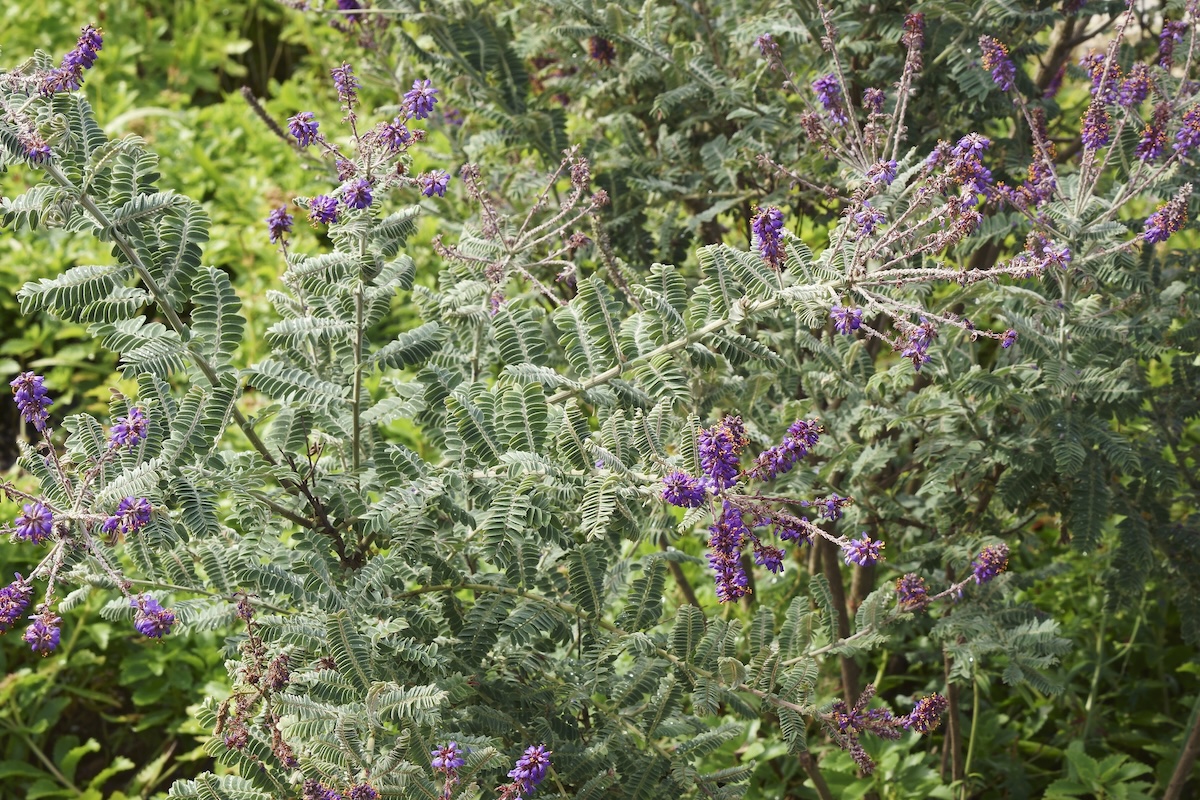
While leadplant is incredibly durable, this drought-tolerant native actually gets its name from the silvery-gray hue of its leaves, which are said to resemble the color of lead. But beyond those striking leaves, leadplant impresses with its summer-blooming flowers that have brilliant purple petals and bright orange stamens. Like many other low-water plants, leadplant owes its drought resistance to its long tap root; however, leadplants can be difficult to transplant, so be choosy about where you grow them.
Anise Hyssop (Agastache foeniculum)
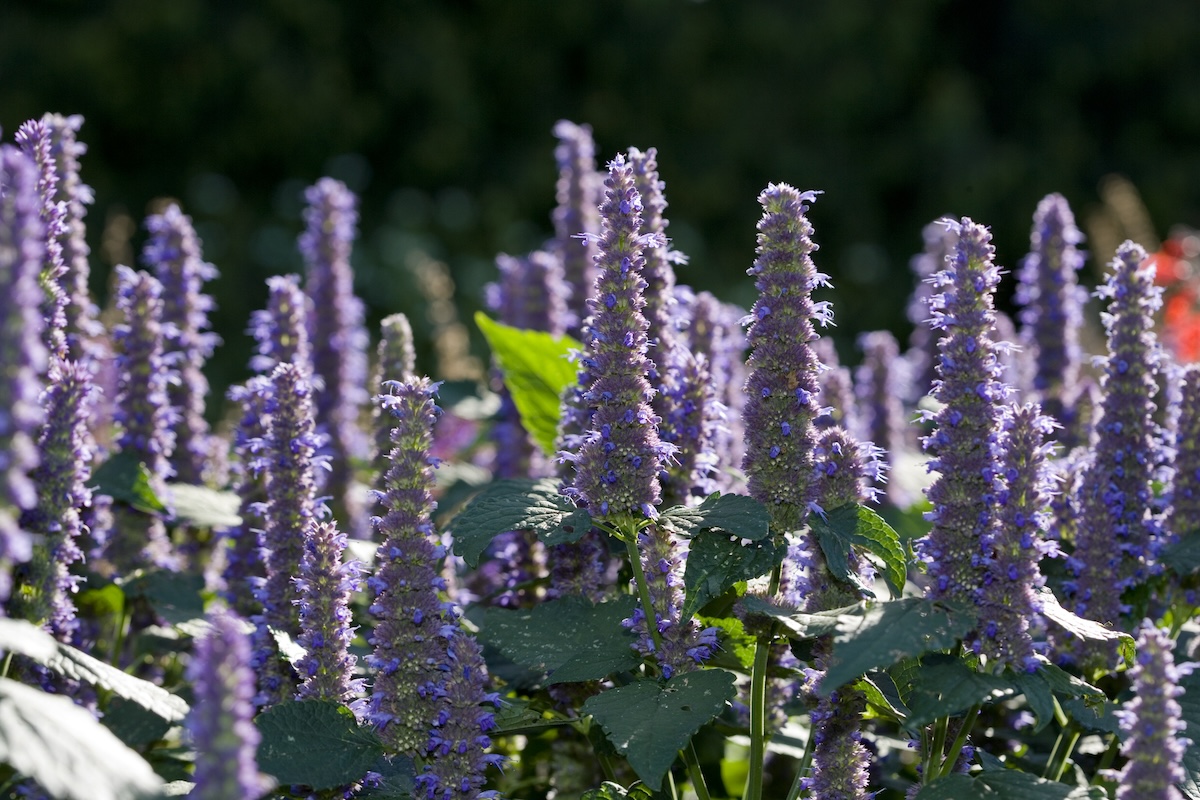
In many parts of the world, gardeners grow anise hyssop for its fragrant leaves and spikes of purple flowers, which are highly attractive to pollinators. But this plant is actually native to the plains of the Midwest and Canada. Depending on your gardening style, grow anise hyssop purely for ornamental appeal, or keep it as a culinary herb and use its licorice-flavored leaves in teas, and for its ability to bring butterflies and hummingbirds to the garden.
Cream False Indigo (Baptisia bracteata)
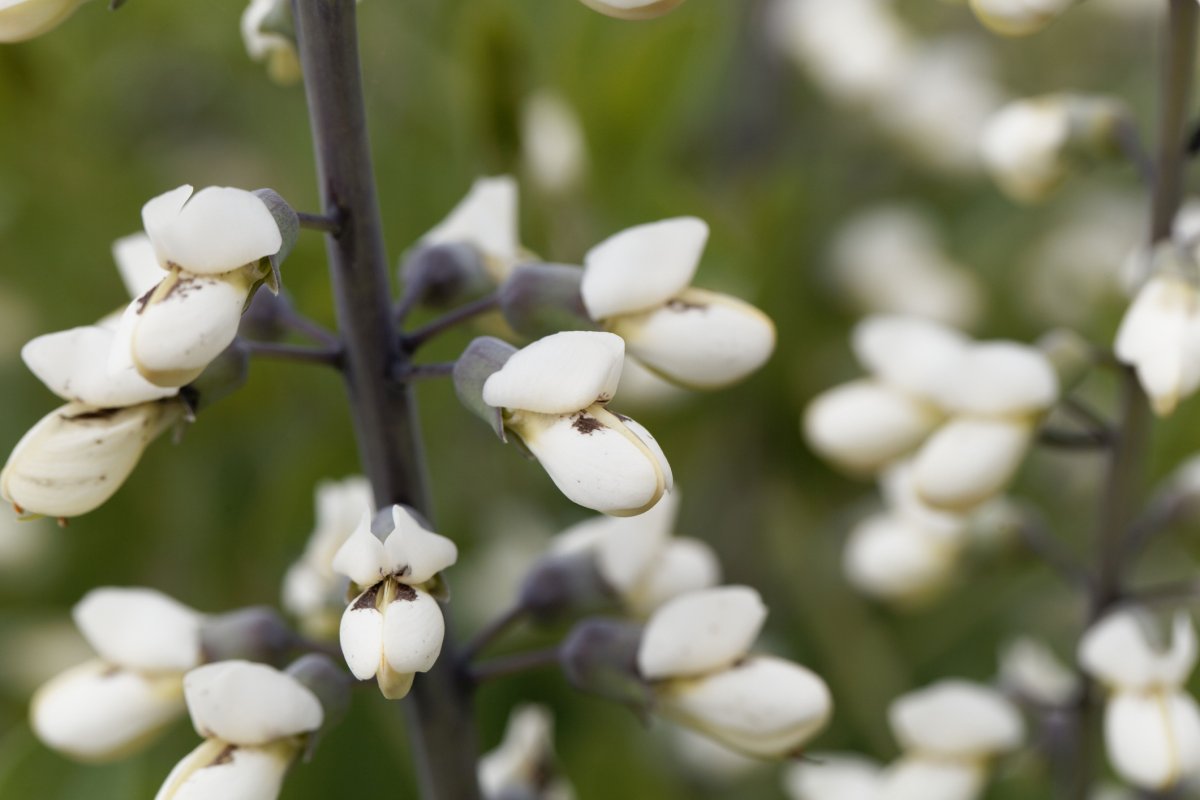
Another Midwestern prairie plant, cream false indigo has a bushy growth habit and pale yellow flowers that are favorite haunts of queen bumblebees. When mature, these plants grow to about 3 feet tall and they thrive best in well-draining soil in gardens that receive full sun to part shade. Surprisingly, false indigo plants are actually members of the legume family and they can improve soils with their nitrogen-fixing roots.
Rocky Mountains
Dry soil can be even more problematic in the Rockies due to the harsh drying winds and increased solar radiation that are common in this area. But even in this tough growing spot, choosing low-water natives can reduce irrigation needs. For even more xeriscape landscape ideas, consider rainwater harvesting and add an annual application of compost to your soil for improved water retention.
Purple Poppy Mallow (Callirhoe involucrata)
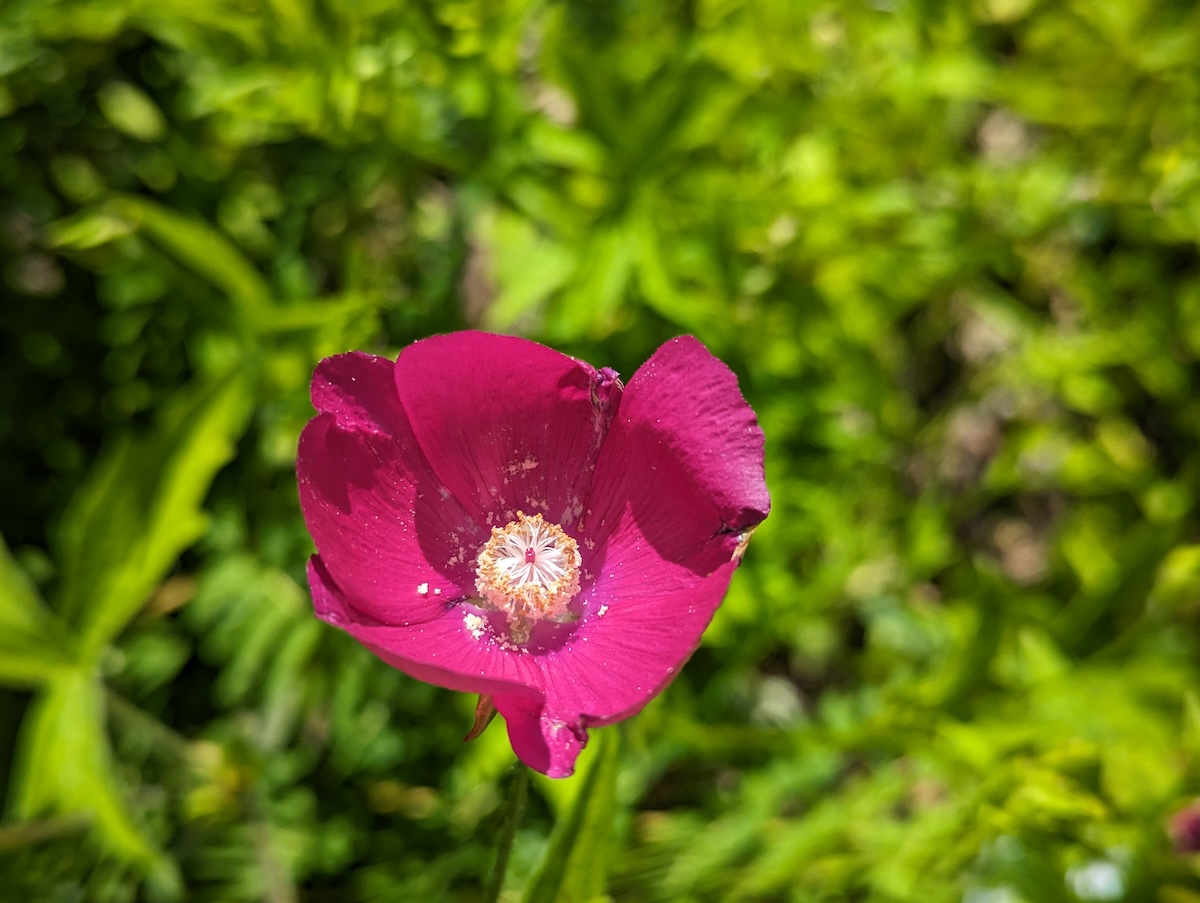
Also known as winecup, purple poppy mallow may steal all the attention in your garden with its bright magenta flowers and sprawling growth habit. These plants can be grown as ground covers, but they look even more impressive when they’re allowed to trail over low walls and rocks. Blooms are most prolific in summer, but winecups can continue to flower sporadically into fall, luring in painted lady butterflies and other pollinators.
Prairie Smoke (Geum triflorum)
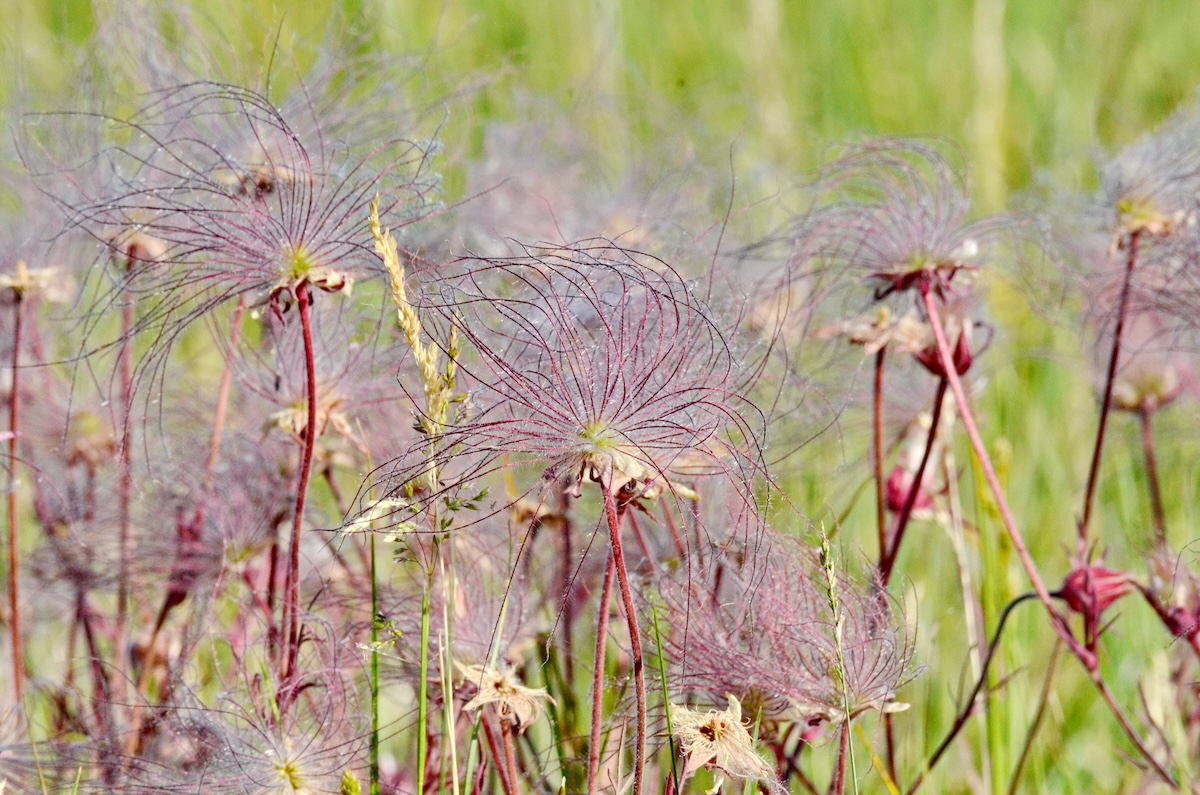
Prairie smoke plants have a dramatic name and a dramatic look to match. These natives produce nodding, pink flower heads in late spring to summer and their low, spreading nature makes them top choices for ground covers and rock gardens. However, prairie smoke plants really come alive once their flowers fade into fluffy seed heads, which rise above the plant’s leaves like a haze of pink smoke.
Showy Goldenrod (Solidago speciosa)
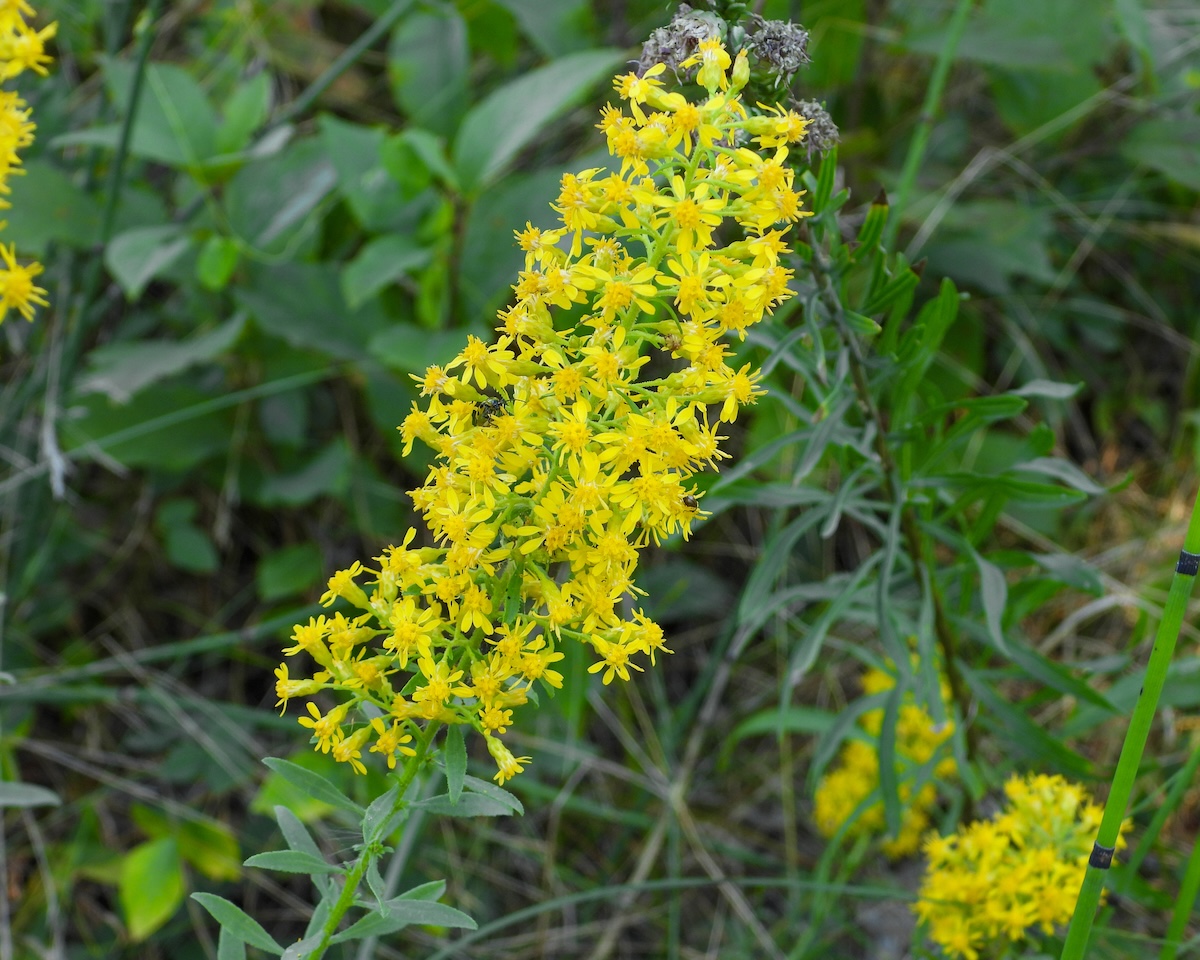
North America has about 60 types of native goldenrod and most of those goldenrod species have a good deal of drought tolerance. But if you live in the Rockies, showy goldenrod is the type of goldenrod you want to be looking for. This goldenrod species has large, upright spires of bright golden flowers and it provides an important food source for pollinators late in the season when many other ornamentals aren’t in bloom.
Northwest
Even though rainfall is abundant in many areas of the Northwest, creating a xeriscape backyard or garden still has its perks. Xeriscapes don’t need much maintenance and their undemanding nature makes them good for the environment. Plus, including colorful native plants in a landscape design can be incredibly attractive to you and to pollinators.
Wild Strawberry (Fragaria vesca)
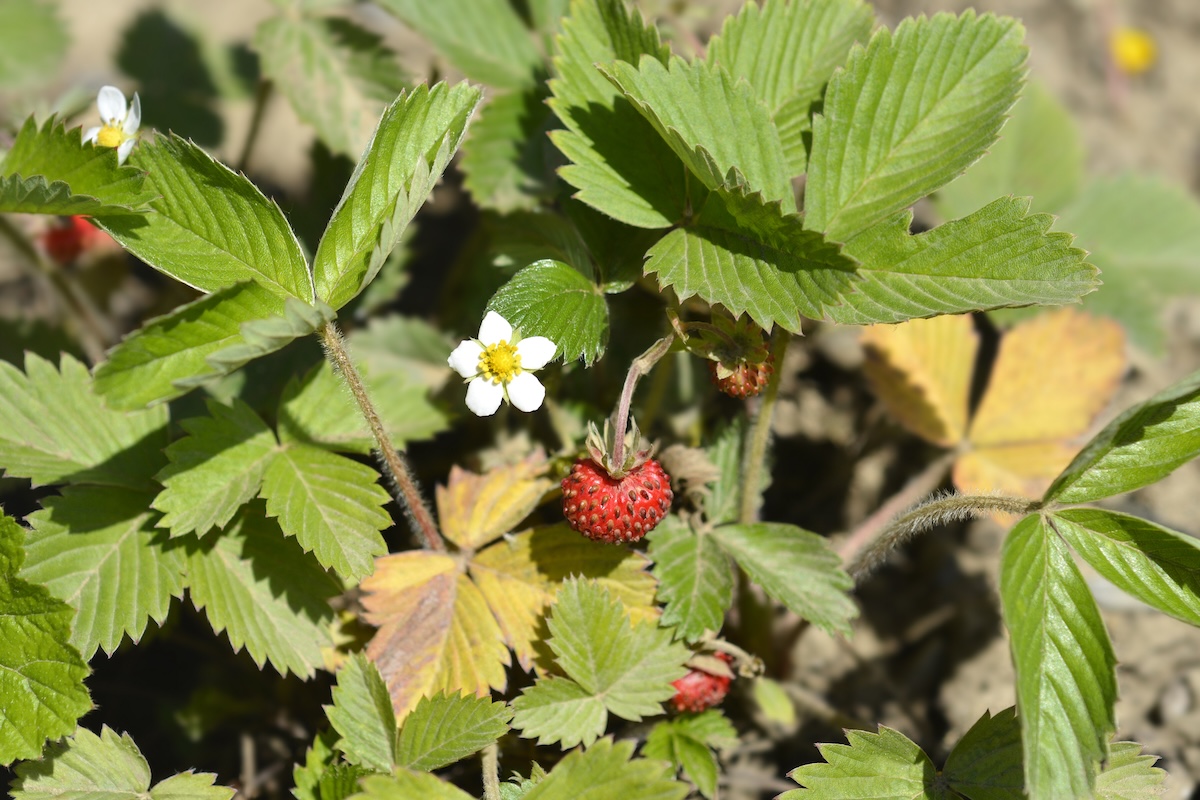
Wild strawberries are just as edible as cultivated strawberry plants, but they are much less demanding. These plants grow low to the ground and their sprawling growth habit makes them useful as ground covers or for erosion control. While their berries may be small, wild strawberries offer season-long interest with spring-blooming flowers and bright red, fall foliage.
American Harebell (Campanula rotundifolia)
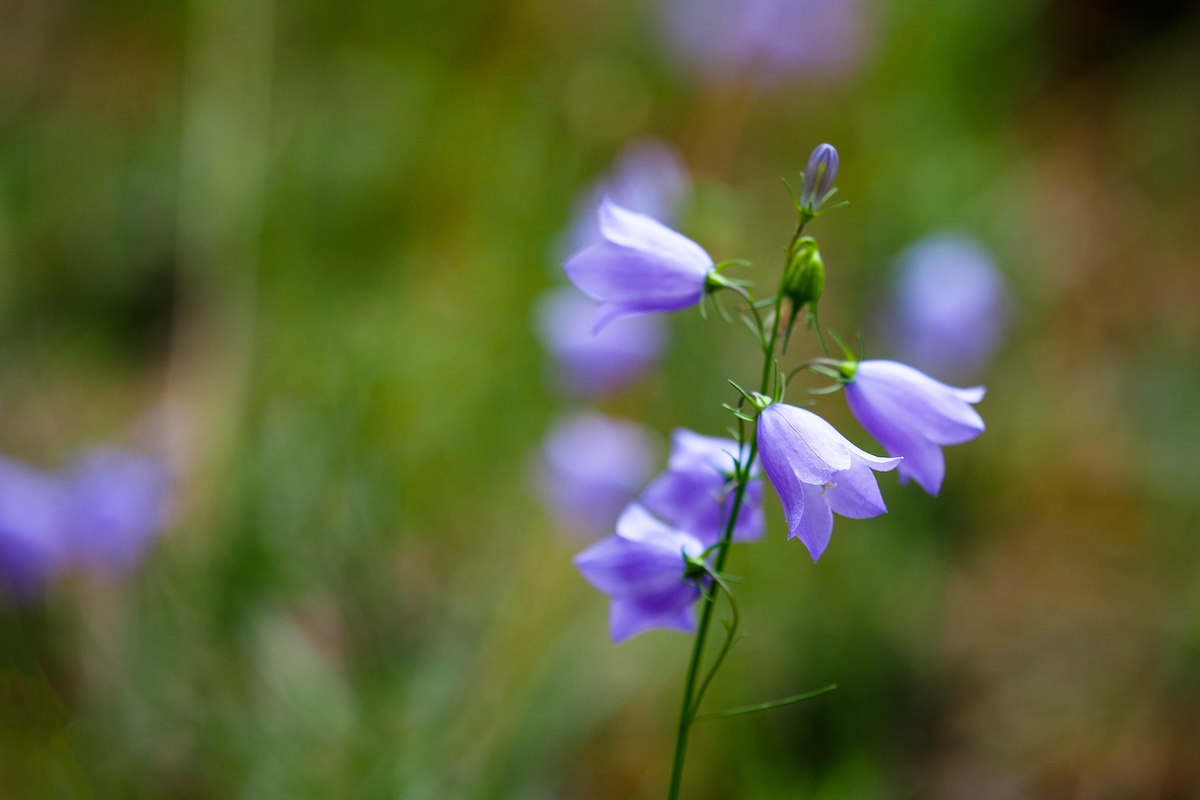
Harebells are “circumpolar” plants that grow in many areas around the Northern Hemisphere, including the Northwest. Much loved for their bluish-purple flowers, harebells start blooming in early summer, but happy plants can continue to flower through fall. To encourage additional blooms, deadhead spent flowers and grow these hardy little plants in sunny spots with rocky or sandy soils.
Blanketflower (Gaillardia aristata)
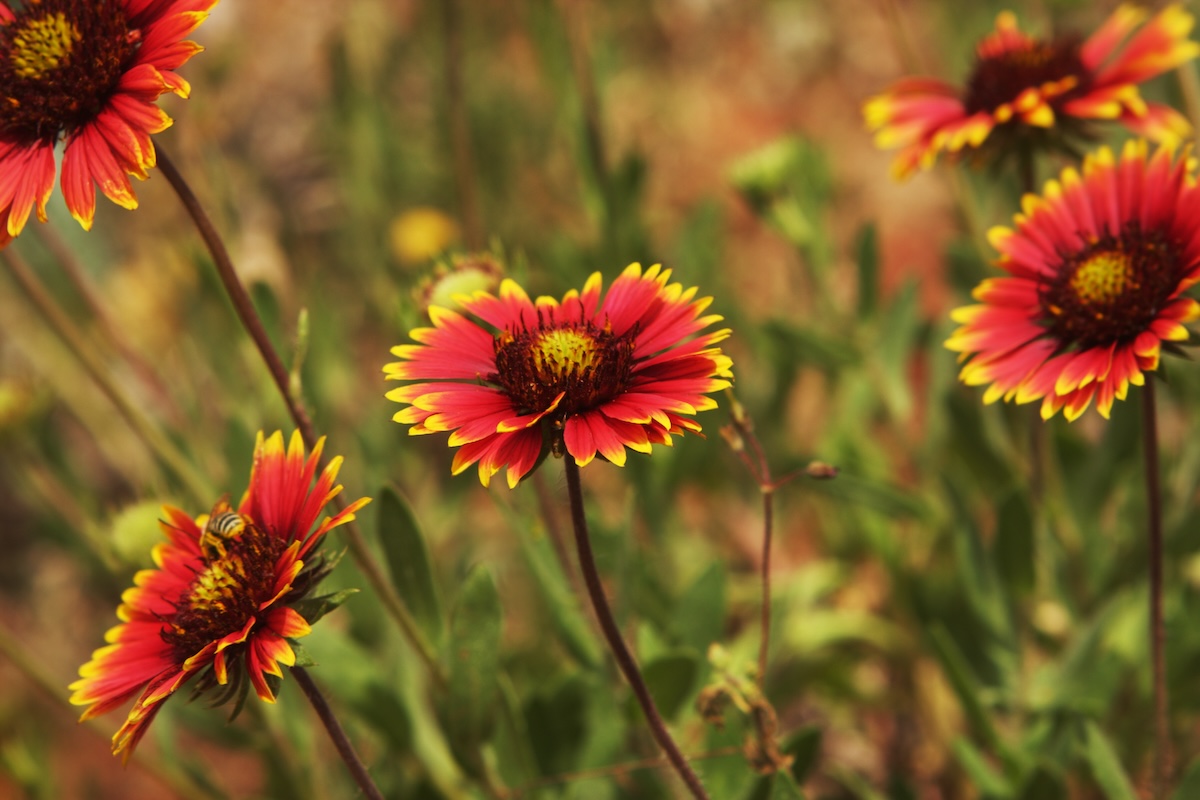
Blanketflowers form a dense mat or “blanket” as they grow, which can be useful for controlling erosion, suppressing weeds, or just adding extra garden color. Mature plants only grow to about 2 feet tall, but each plant can spread to more than 20 inches wide. Fast-growing and drought-tolerant blanketflowers sprout readily from seed, although plants grown from seed won’t bloom until their second year.
Southwest
In many areas of the Southwest, summers are blisteringly hot and rainfall is scarce. But gardeners in this region don’t need to limit xeriscape garden plants to succulents and cacti. While there are many native cacti from which to choose, Southwestern growers may want to cultivate a few low-water native flowers in their yards as well.
Whorled Milkweed (Asclepias verticillata)
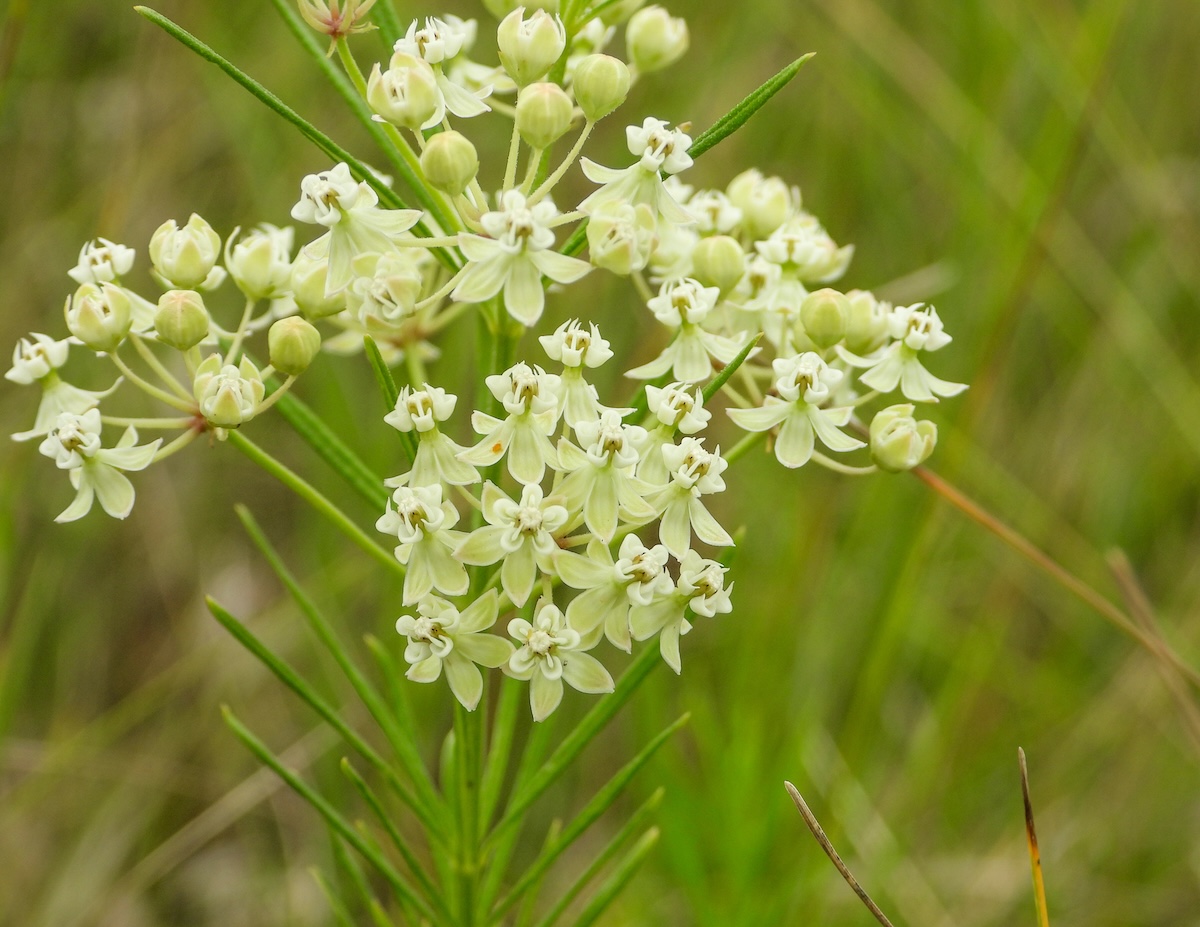
There are many native North American milkweed varieties, but whorled milkweed is one of the best choices of xeriscaping plants. Whorled milkweed grows to only about 2 feet tall and its late-blooming white flowers look pretty at the front of flower beds. Many pollinators love these plants, and they serve as hosts for Monarch butterflies.
Heath Aster (Aster ericoides)
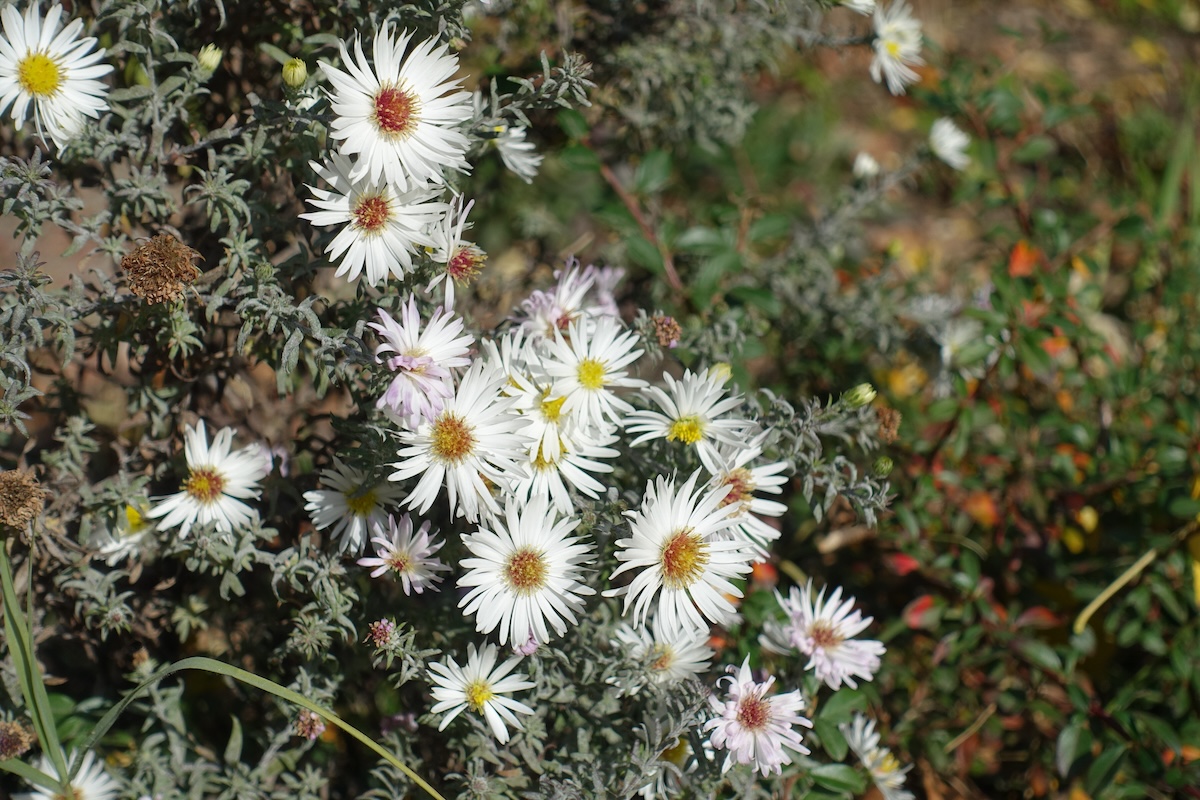
Like goldenrod, there are lots of native aster options, and most of them are drought-resistant. With their snowy white blooms, heath asters may not be the showiest asters, but they are one of the most drought-tolerant picks. These plants love gravelly soils and they naturally grow in clusters as they spread and self-seed. They attract bees, butterflies, and moths.
Prickly Pear (Opuntia)
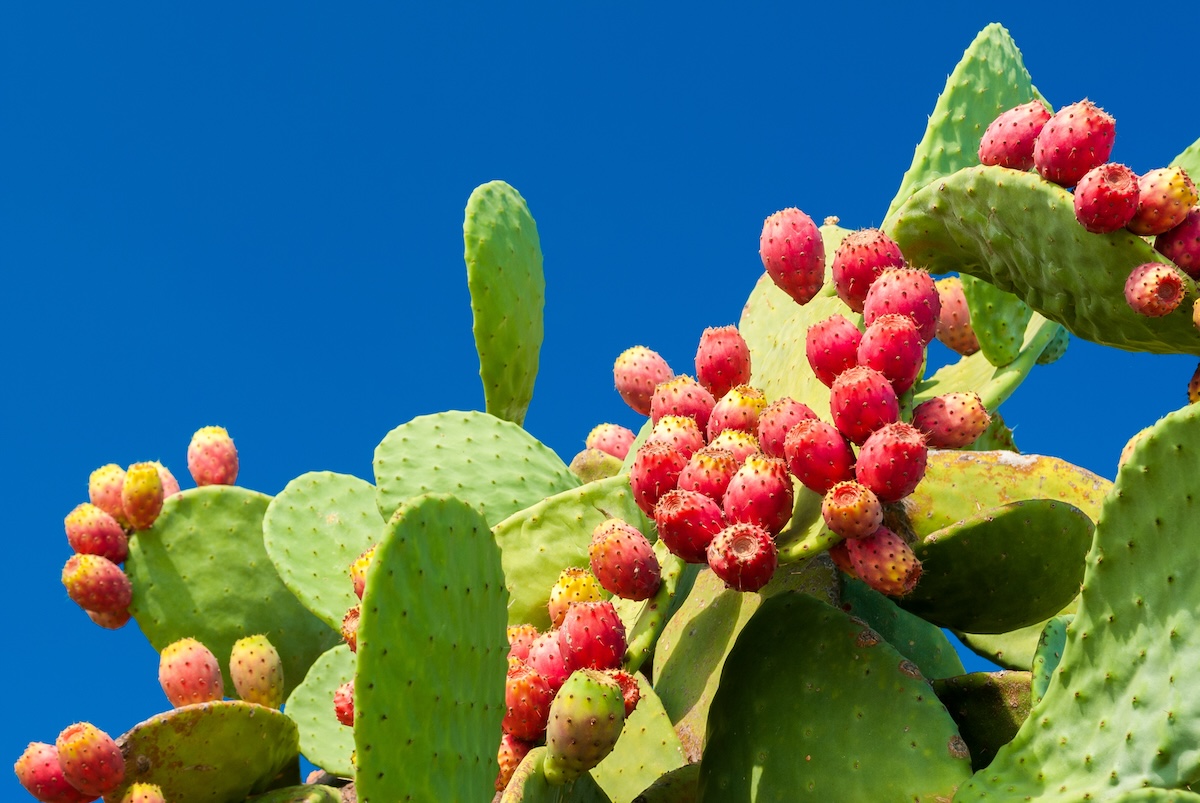
While perennial flowers have their charms, if you want that classic desert garden feel, growing a few cacti is a must. Prickly pears have the largest native range of any North American cactus and they can even grow in cold spots (down to USDA Zone 4). However, prickly pears are also happy in the heat and they are sure to delight gardeners and home chefs with their colorful flowers and edible fruit and cactus pads.
